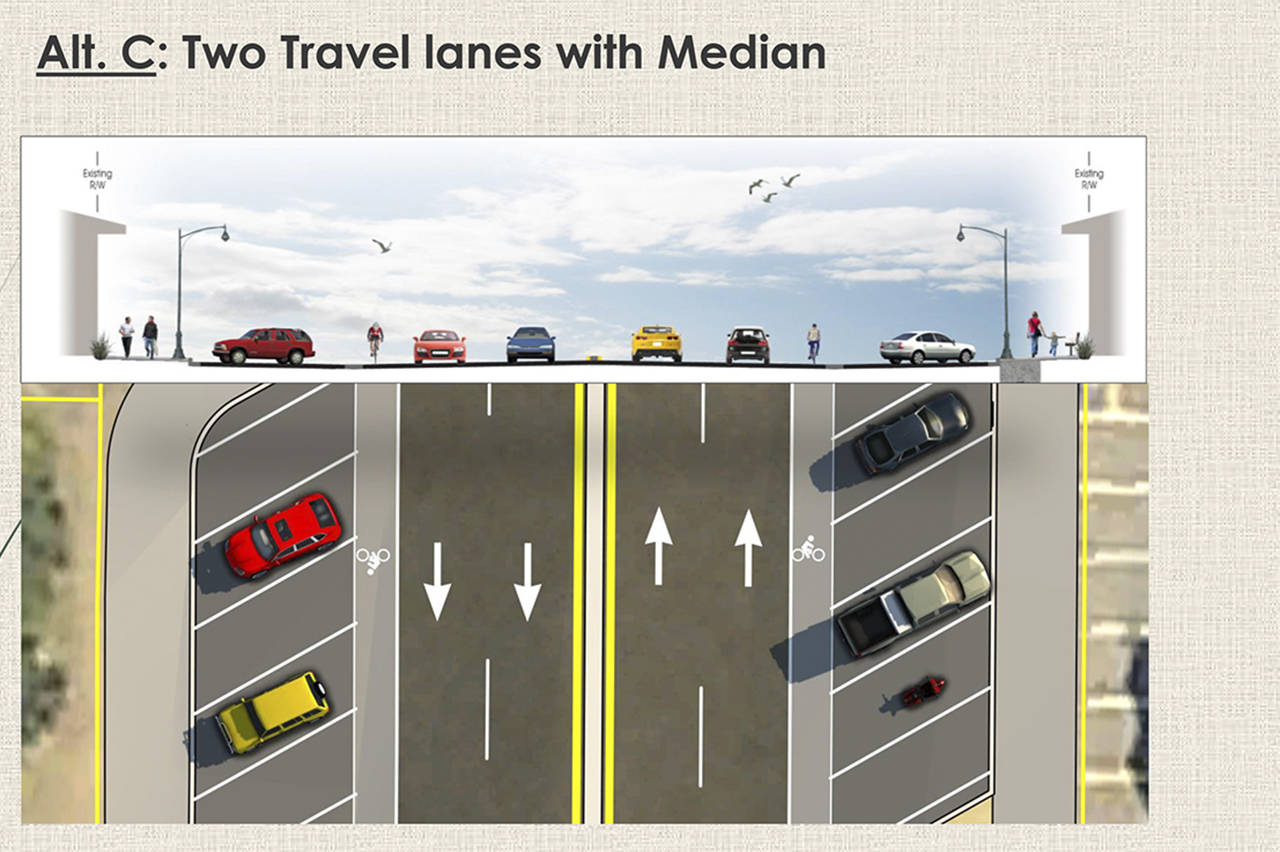The Ocean Shores City Council went back to the drawing board — literally — on Monday night in a study session on the proposed Point Brown Avenue project to build sidewalks, crosswalks, bike and pedestrian lanes and new parking for the main boulevard into the city.
The council last month by a 5-2 vote agreed to proceed with the Point Brown Avenue redesign project but it did not choose one of the recommended alternative design concepts, and instead asked to have the city’s consultants come back and explain what other alternatives might be considered.
City Public Works Director Nick Bird and design consultant Debra Seeman of David Evans and Associates addressed the alternatives and how they originated, and then offered suggestions as to how the project might be scaled back further.
“This is our idea to dive back into the Point Brown project,” Bird said. The idea is to “open it back up to see if there is anything we want to modify and change.”
Bird most recently had advocated a phased-in plan where half of the project would be completed first before going forward with completion.
“A number of decisions are necessary in order to proceed with the Point Brown Sidewalk Project,” a council summary said. “First, we need to confirm that council approves proceeding with the project design. Second, we need to confirm the preferred design alternative and that we only intend to complete the first segment (southern half) with the current grant funding.”
The current proposal would create ADA accessible shared-use sidewalks on both sides of the roadway, bike lanes lighted pedestrian crossings, on-street parking, pedestrian and street illumination, storm water collection and treatment, and two roundabouts. The total cost had been estimated to be approximately $15.4 million, and the city currently has $683,350 in federal grant contributions and $59,400 from Grays Harbor County.
“We anticipate two large grants will provide $4 million and $1.9 million respectively. That is approximately $6,645,000 in secured and planned grant funding,” a fact sheet says.
Seeman explained that for the city to move forward with the project might take a step back in the design process. She suggested it might be feasible to build five-foot sidewalks only with curb and gutter improvements for $1.21 million, and combine that with an additional $1.35 million of storm drainage improvements for a total project cost of $2.5 million.
Along with those items, Seeman also presented a menu of additional improvements and what they would cost, such as five-foot bike lanes that would cost an additional $251,240, or left turn lanes rather than roundabouts for $98,835, angled parking priced at $1.6 million, and lighting at $882,444. With all of the additional items, the total construction cost was estimated to be $11.2 million with a 30 percent contingency figured into the number.
Seeman said she realizes that some of the items might be too costly for the city to consider, but they were based on discussion with businesses, citizens and the effort to “really create a cohesive coastal town image.”
While the council made no decision on the project on Monday, several members expressed support for the sidewalks-only option with stormwater improvements. Several suggested drawing up a project where the sidewalks would in some cases be placed closer to businesses than to the street to preserve existing parking and uses.
“This is a big step, this is a forever project,” Seeman said. “We need to make sure we are making the right decision.”
She noted that every decision has a cost associated with it as well as an impact: “If you do one thing, sometimes you have to do three things because they are all tied together.”
Councilwoman Holly Plackett, who has been a proponent of the project, said the No. 1 issue is public safety, and she favored at least doing the sidewalks, crosswalks and storm drain improvements: “If that’s a program we can build upon, maybe it’s the best we can do.”
The council agreed to discuss the issue further at the Oct. 9 regular council meeting.



